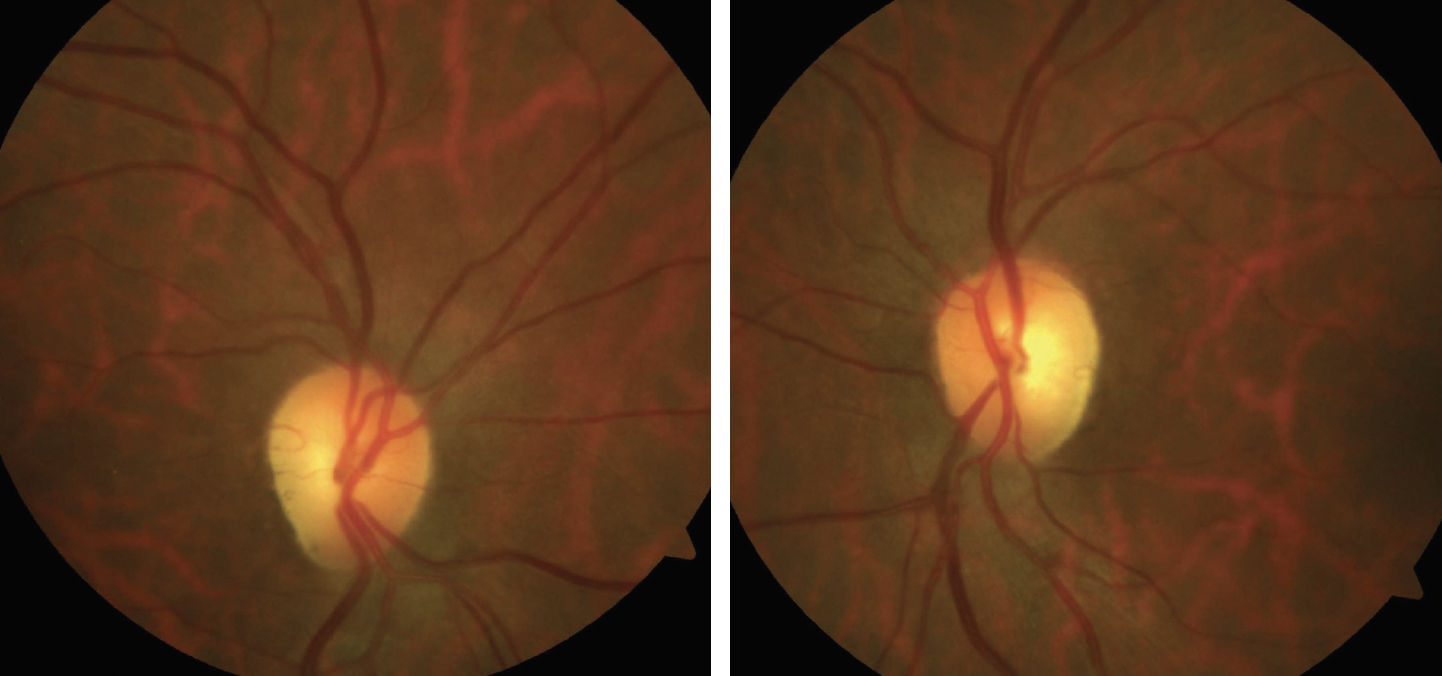 |
This study found that a large optic disc most commonly presented in patients with a vasospastic phenotype and in those from racial and ethnic minority backgrounds. Photo: Andrew S. Gurwood, OD. Click image to enlarge. |
Aside from intraocular pressure, the list of factors that contribute to glaucomatous optic neuropathy remains obscure, making it challenging to predict risk of visual field loss in these patients. Optic disc size and structure can also affect how anatomic features of glaucoma present and how they are interpreted in clinical imaging. A recent study that compared disease progression between glaucoma patients with small vs. large discs found that certain clinical and demographic factors correlate with disc size and rates of progression.
The retrospective review included 4.505 glaucoma patients from the UCLA Stein Eye Institute, of which 233 had small discs and 157 had large discs as defined by OCT or Heidelberg retinal tomography disc area. Medical records were reviewed for all patients, and logistic regression was used to identify a total of 47 predictors of visual field progression in individuals with small and large discs, as well as 48 predictors of large vs. small discs.
In individuals with small discs, Asian ethnicity was associated with fivefold increased odds of progression compared with non-Hispanic white ethnicity, which the researchers note could make this population more susceptible to rapid vision loss.
“Eyes with small optic discs may have very small cups even in the face of significant damage, leading to a possible tendency for underdiagnosis in small discs,” the researchers explained in their paper, published in Ophthalmology Glaucoma. “In individuals with small discs, glaucomatous nerve damage may instead be indicated earlier on and more sensitively by structural parameters other than disc size (e.g., neuroretinal rim size, shape, and pallor; RNFL visibility and thickness; CCT; presence of disc hemorrhages) or by functional parameters such as visual field testing.” To improve early detection of glaucomatous damage in patients of Asian ethnicity with small discs, the researchers suggest “it may be of benefit to further investigate the application of these modalities.”
In both individuals with small or large discs, higher intraocular pressure range and peak were found to be associated with an increased risk of progression. This finding aligns with previous studies that have linked increased IOP range and fluctuation to a higher risk of glaucomatous damage and visual field loss.
Multivariate analysis identified the following predictors of having large vs. small discs: vasospastic phenotype (characterized by hypotension, migraine headache, and Raynaud’s phenomenon) along with Black, Hispanic/Latino, Asian and other vs. non-Hispanic white ethnicity.
“Black individuals had >20-fold increased odds of having a large vs. small optic disc,” the study authors reported, pointing out that this supports existing evidence suggesting that this ethnic group has disproportionately larger discs compared to others. “We also found ~10-fold and ~fivefold increased odds of having large optic discs in individuals of Hispanic/Latino and Asian ethnicity, respectively, suggesting that disc size may be an important factor to consider in these ethnic populations,” they added.
In summary, this study identified higher odds of glaucomatous progression among Asian individuals with small optic discs (compared with non-Hispanic white patients) and among patients with either small or large discs with increased IOP range and peak. Additionally, large discs presented most often in individuals with a vasospastic phenotype and in those from racial and ethnic minority backgrounds.
“Further characterization of discernible phenotypes would improve disease prognostication and help individualize glaucoma treatment,” the authors concluded in their paper.
Ho C, Tseng VL, Grassi L, et al. Predictors of glaucomatous progression in individuals with small and large optic discs. Ophthalmology Glaucoma. November 7, 2023. [Epub ahead of print]. |

